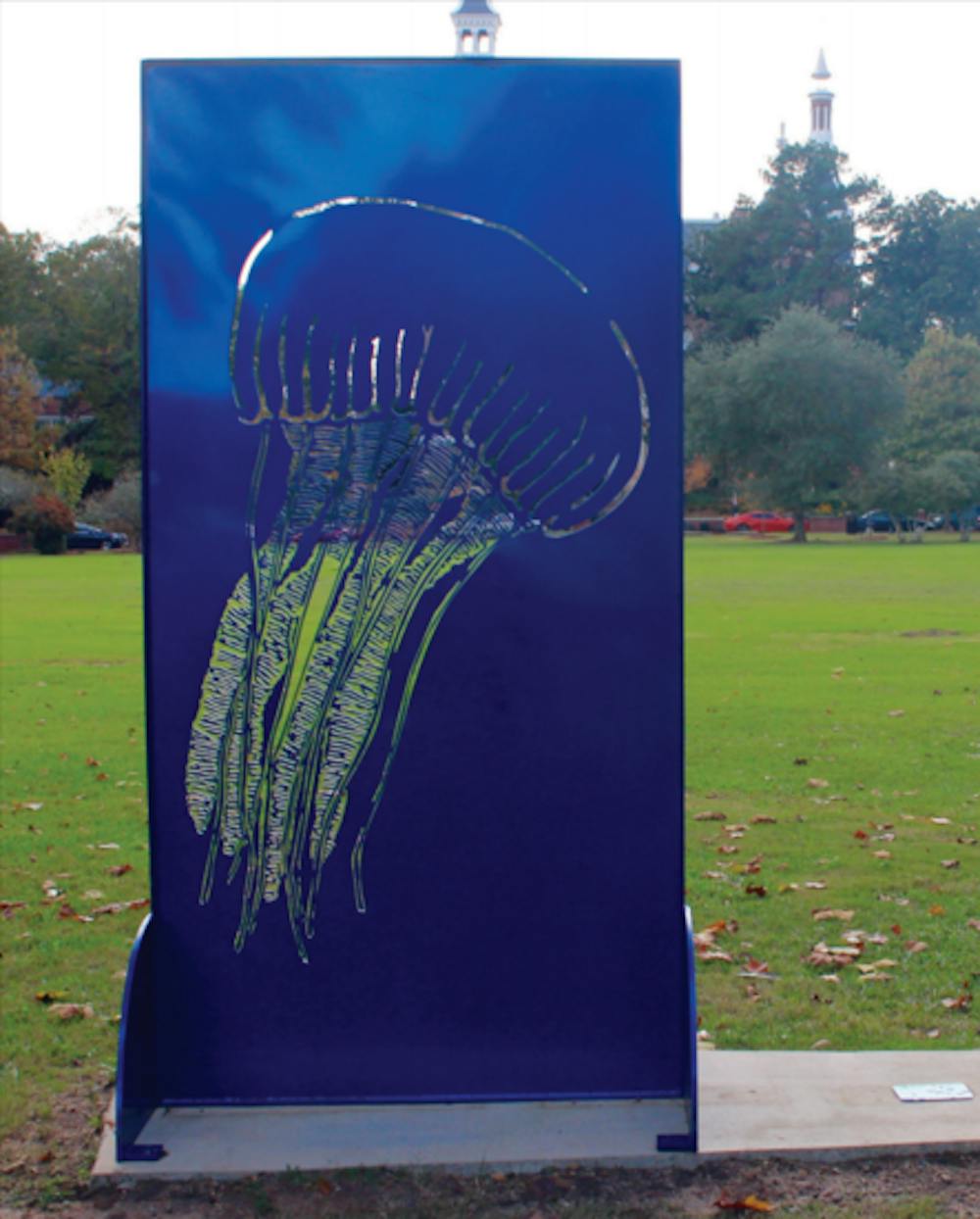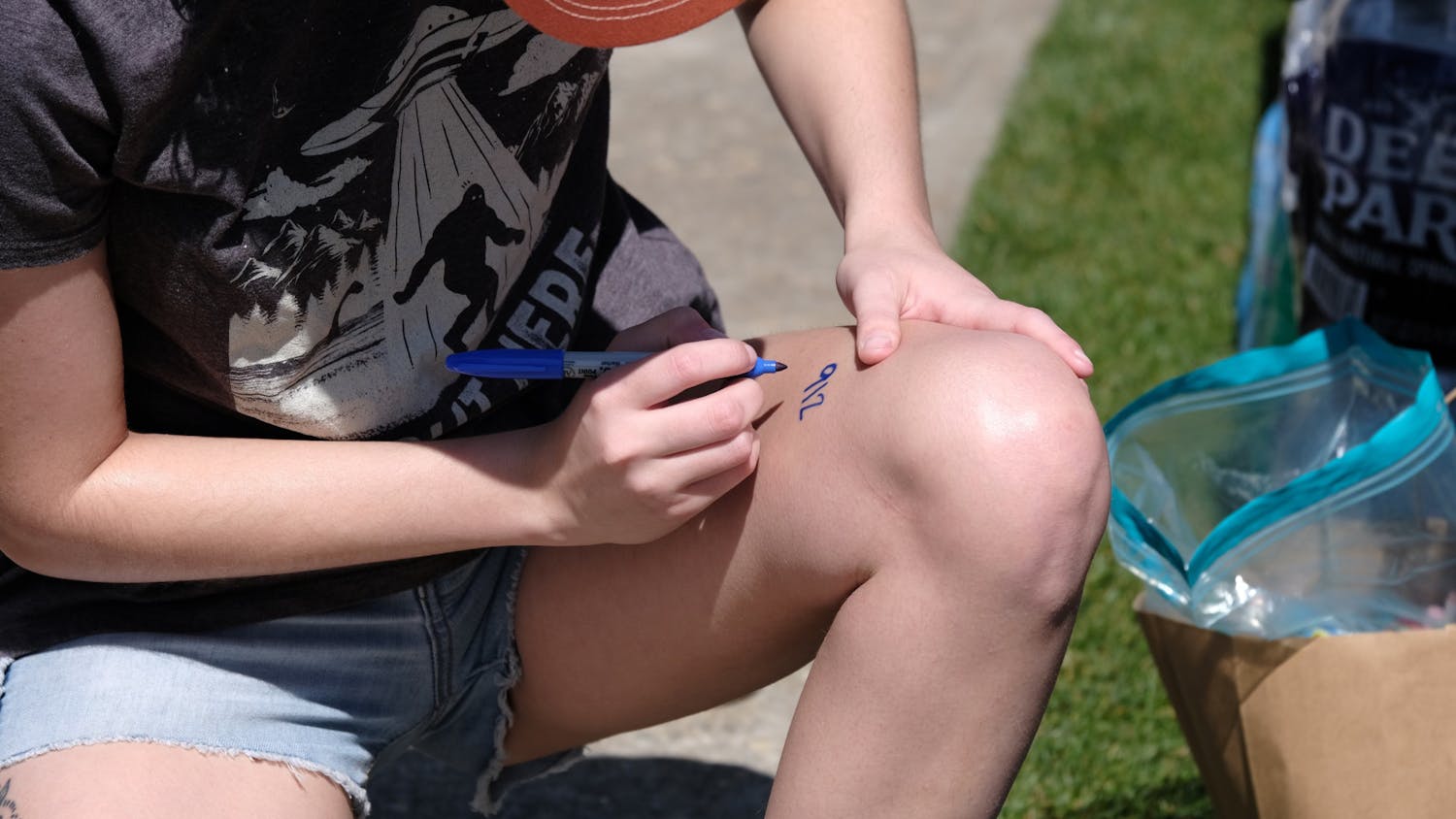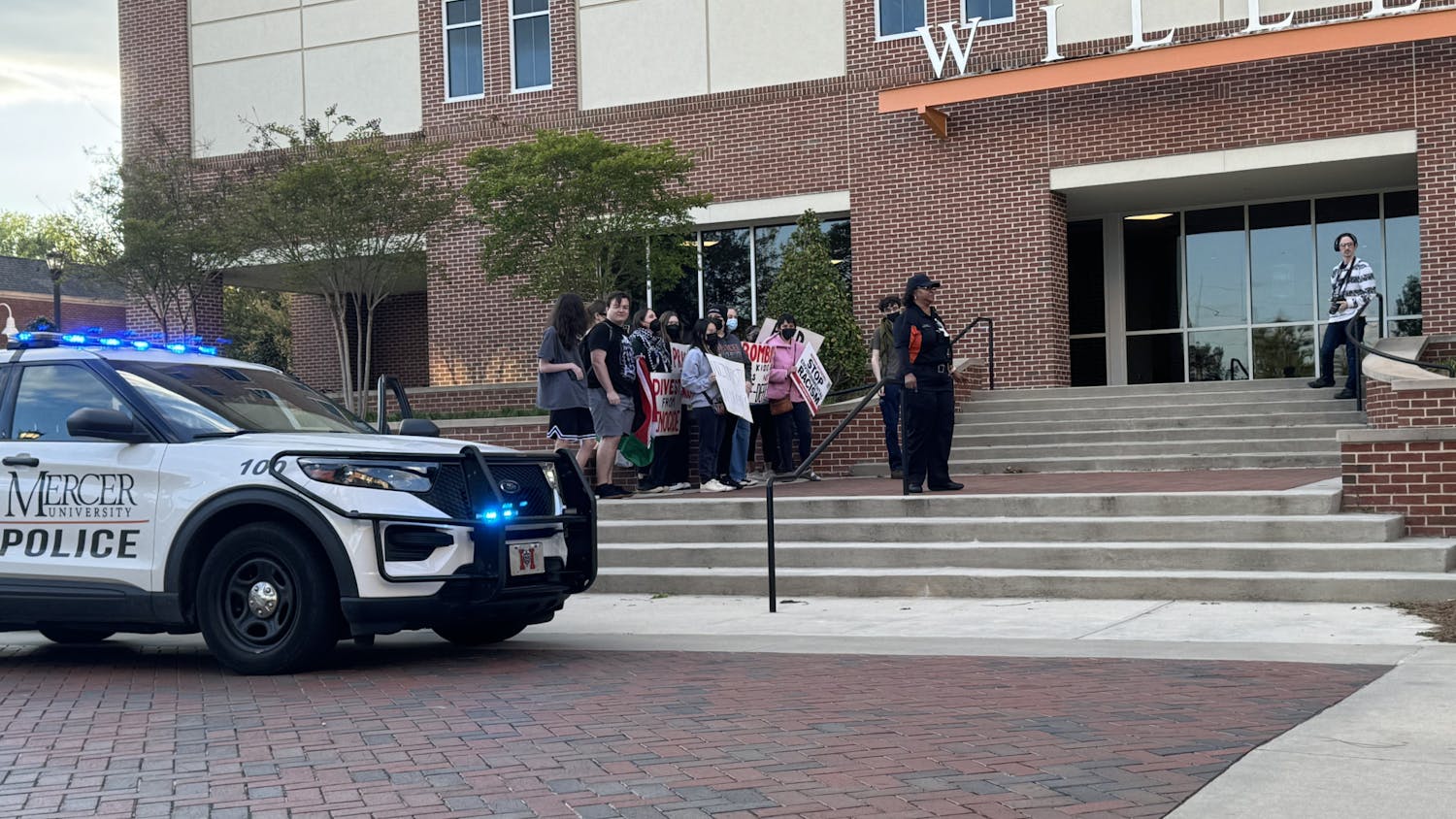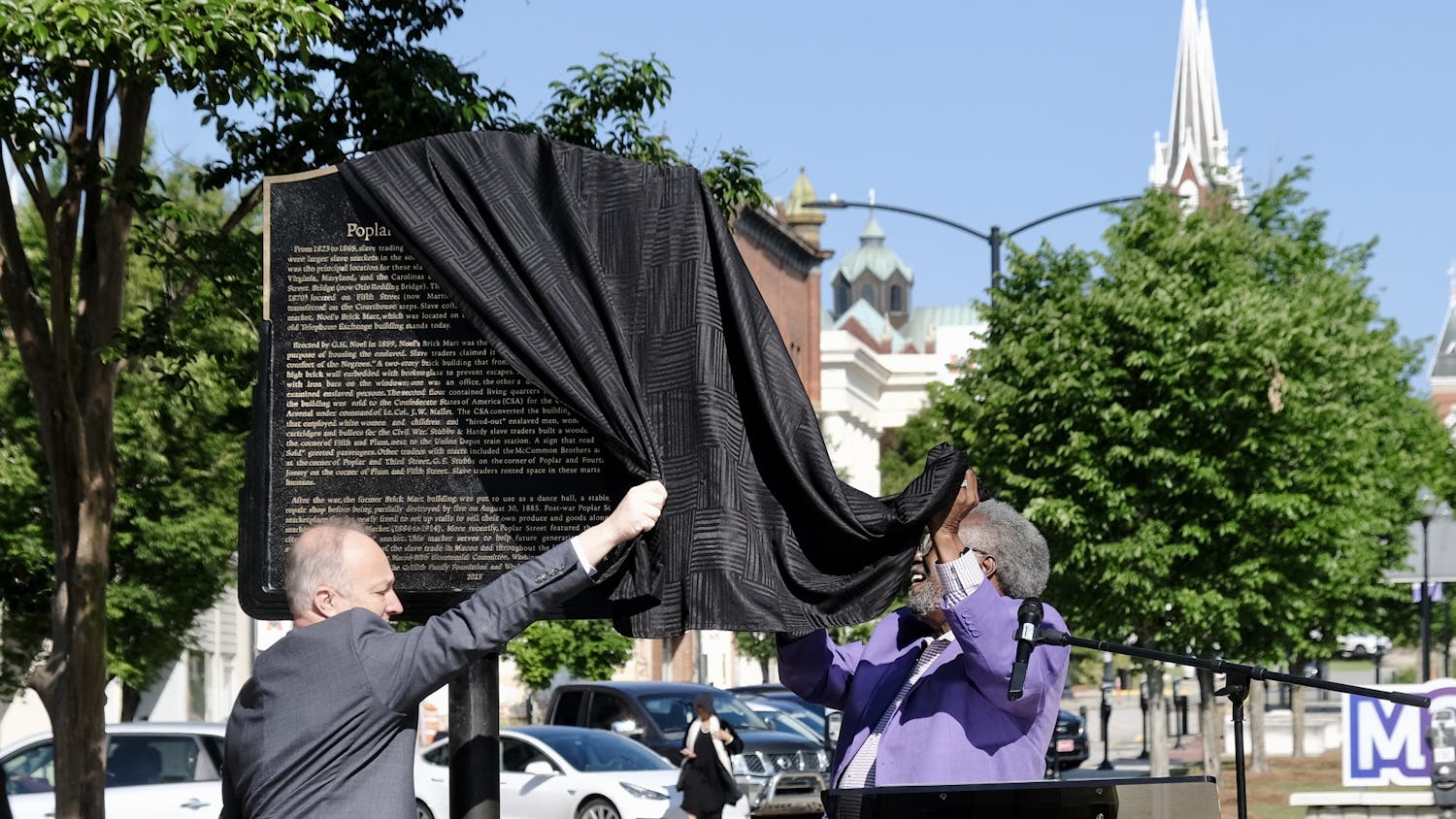Public art is adding a new dimension to Tattnall Square Park’s natural beauty.
Mercer University’s faculty and students have installed a new collection of art pieces throughout Tattnall and officially unveiled the entire showcase Saturday, Nov.14.
“The shows are switched out every five months as part of the Art in the Park public art program,” said Craig Coleman, an art professor at Mercer.
Coleman said that the program has been in the park since November 2014, and Mercer’s art students are helping to share the new pieces.
“We have some of our students from various classes over to meet the artists and help them not only carry the stuff to the location but help them fasten it down and get it constructed,” Coleman said.
One of the new pieces is a large, silver fish skeleton that hangs from one of Tattnall’s trees.
“It was just a pile of scrap plywood that looked an awful lot like fish bones,” said Ryan Mathern, artist and former Mercer art student. “So I stuck them together and made a ten-foot-long fish.”
Mathern said the sculpture, “Pisces Osseum,” was originally created for an outdoor show in Atlanta two years ago. For this art show, the fish has been rejuvenated for its six month stay in Tattnall.
Funding for this project comes from the Knight Neighborhood Challenge Grant, a program that has been helping to improve the College Hill Corridor since 2009, according to the College Hill Alliance.
[pullquote speaker="Craig Coleman" photo="" align="left" background="on" border="all" shadow="on"]We do want people to like the artwork, but we also want to do what art does best, which is introduce a new way of seeing.[/pullquote]
While the Art in the Park program brings something new and fresh to Tattnall, Coleman and Andrew Silver, chairman of the Friends of Tattnall Square Park advocate organization, worry about the public’s reaction to less traditional pieces.
“Parks are places that people associate with certain conventional art and good art. The best art is often unconventional,” Silver said. “So what do you do when you want to push the envelope, but you know people are really attached to natural public spaces?”
While there has been no outright disapproval of the art pieces, there is a constant concern for what will and won’t fly with Maconites.
“We do want people to like the artwork, but we also want to do what art does best, which is introduce a new way of seeing,” Coleman said. “If you see an artwork that doesn’t do that, that just gives you a sense of familiarity maybe that’s a little boring.”
The contemporary style found in Art in the Park pieces contrast with the more traditional style found throughout the rest of Tattnall.
“The beauty of temporary art that stays for half a year or a month is that you can expose a community to new unconventional art that takes you outside of your comfort zone,” Silver said. “People who are made uncomfortable to the point that it ruins their park experience, they know this will leave in a few months, and they’ll have their park back.”
By this time next year, the Art in the Park program will be gone, but the presence of art in Tattnall will continue to be a point of interest within the Macon community.
“That’s the power of public art, the power to reinvent your relationship to a place,” Silver said. “The best public art gets you in a new relationship with your home, with your place, with your city, with your community.”
New Art Installments come to Tattnall Square Park

“Dance of the Jellyfish” by Jenny K. Hager-Vickery stands in Tattnall Square Park alongside other public art.




